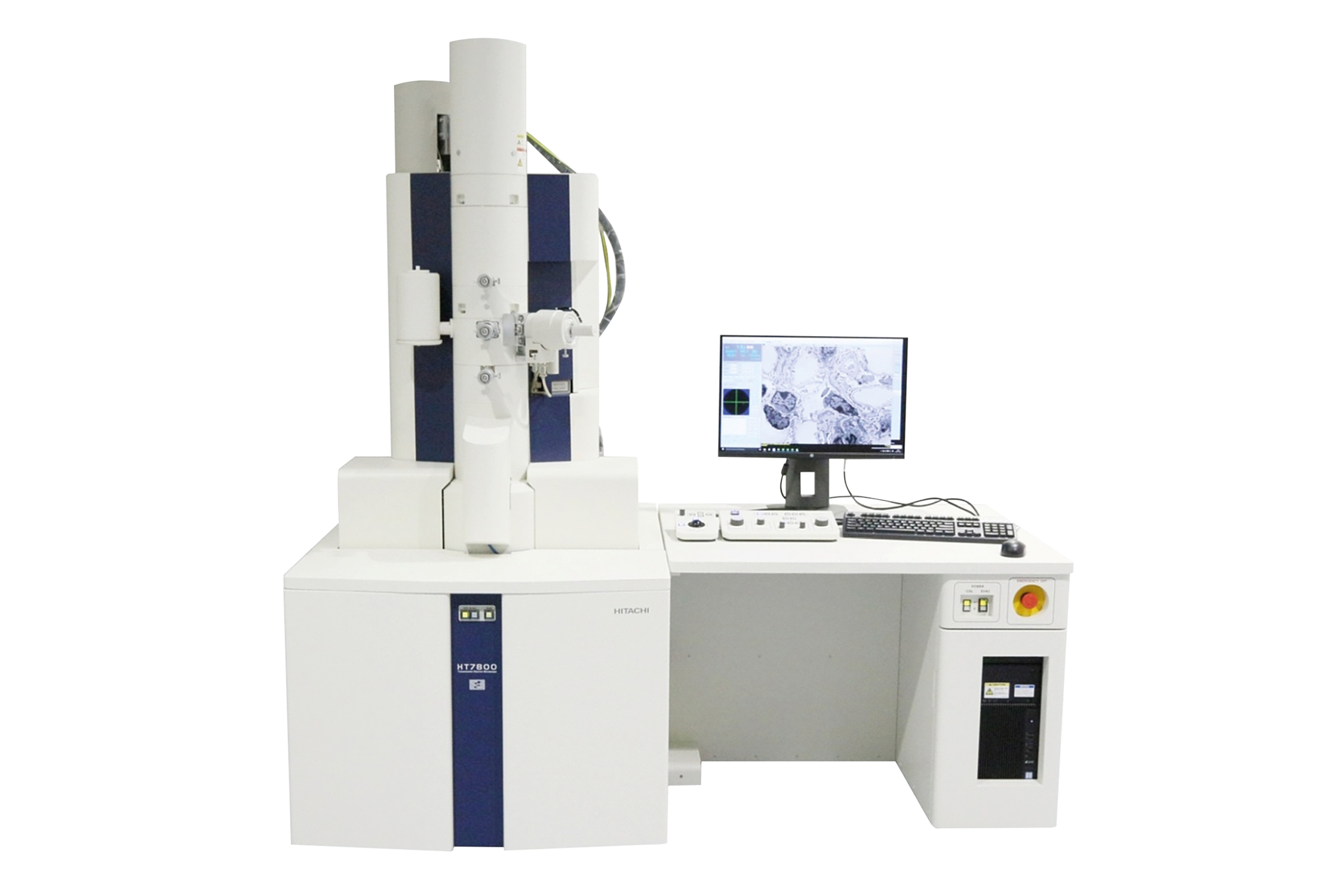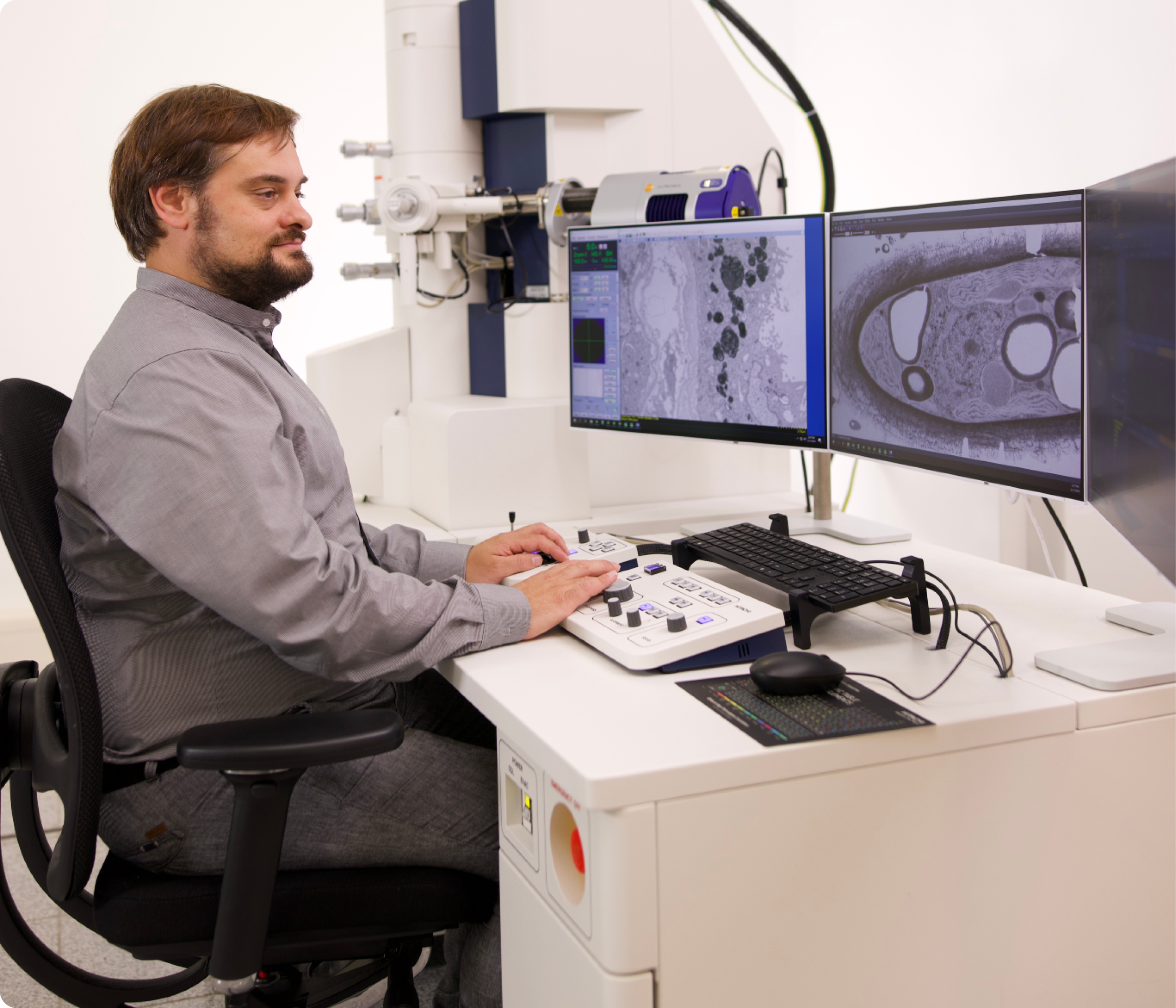Talk to an expert
Discover the future of electron microscopy with the Hitachi HT7800
Contact UsHitachi High-Tech Europe

5 min read
Jun 27, 2025 10:43:39 AM
From materials science to life sciences, and from nanotechnology to semiconductor manufacturing, TEM is an indispensable tool for pushing the boundaries of scientific knowledge. And in recent decades, technology developments have massively improved the capabilities of TEM instruments and made them more accessible to a broader range of researchers and industries. For example, advancements in cryo-electron microscopy have opened new avenues for studying biological molecules in their native states.
The Hitachi HT7800 series addresses many of these modern challenges head-on. With streamlined operation and a flexible imaging system, it provides researchers with a TEM that meets the demands of high-quality imaging, efficiency, and ease of use. Whether you’re working in biomedical research, materials science, or industrial quality control, the HT7800 delivers the precision and flexibility you need—without the complexity of older TEM systems.

As research techniques advance, traditional TEM systems are struggling to keep up with the increasing demands of modern labs. Scientists and engineers across disciplines are looking for solutions that offer greater precision, ease of use, and adaptability to meet their changing needs. Here are some of the key challenges researchers face when working with conventional TEMs:
1. The need for high-quality imaging across multiple applications
Different types of research require different imaging techniques, but many traditional TEMs force users to choose between high contrast for biological samples or high resolution for materials science. Switching between the two often requires multiple systems, increasing costs and complicating workflows.
Many biological specimens are sensitive to electron beam damage, particularly unstained or cryopreserved samples. So low-dose imaging techniques are essential in these cases for preserving structural integrity. But, some TEM systems may lack the advanced digital imaging capabilities needed to optimize both sensitivity and resolution, which can limit image quality when working with especially delicate specimens.
2. Complexity and learning curve in TEM operation
Many TEM systems need extensive manual control, meaning that even simple tasks such as focusing, adjusting beam intensity, or capturing high-quality images can be time-consuming and require specialized training. This creates a steep learning curve for new users and slows down research productivity.
To increase efficiency, modern research labs need automated tools that simplify common tasks like image acquisition, sample navigation, and data processing. By reducing the number of manual adjustments required, automation can help both new and experienced users achieve consistent, high-quality results faster.
3. The push for versatile, multi-function TEMs
Today’s research is interdisciplinary, requiring tools that go beyond standard imaging. Many labs need techniques such as scanning transmission electron microscopy (STEM) and energy dispersive X-ray spectroscopy (EDX) to gain deeper insights into their samples. Without these techniques, labs would need to invest in multiple instruments or sacrifice certain analytical capabilities, making research more expensive and less efficient.
4. The need for better ergonomics & workflow efficiency
Many traditional TEMs require darkroom conditions, which can cause discomfort for long operating sessions. The need for a dedicated viewing chamber not only restricts lab layouts but also limits the number of users who can access the instrument at once.
Modern researchers need a more comfortable, well-lit working environment that doesn’t compromise imaging precision. A TEM that eliminates the need for a darkroom while still providing high-quality imaging can significantly improve user experience and increase workflow efficiency.
.png?width=887&height=484&name=Features_HT7800_4%20(1).png)
The Hitachi HT7800 series is built to address the most pressing challenges in modern electron microscopy, combining high-quality imaging, automation, versatility, and an ergonomic design in a single system. Unlike traditional TEMs that need extensive manual operation or multiple instruments for different imaging needs, the HT7800 streamlines workflows and makes high-resolution imaging more accessible.
1. Optimized imaging with a Dual-Mode objective lens
One of the biggest challenges in TEM imaging is the need to balance contrast and resolution for different types of samples. The HT7800 eliminates this trade-off with its Dual-Mode Objective Lens, allowing you to switch between High Contrast or High Resolution mode based on your sample needs. By integrating both modes into a single system, the HT7800 saves time, cost, and lab space while increasing imaging flexibility.
2. Simplified operation & automation
The HT7800 is designed for ease of use, reducing the complexity that often comes with traditional TEM systems. It includes automated functions that help both experienced and novice users achieve high-quality results with minimal effort:
These features help reduce training time, eliminate human error, and improve workflow efficiency, making the HT7800 a practical solution for high-throughput research environments.
3. Multi-functional and expandable for advanced research
Most research today is interdisciplinary, so a TEM must offer more than just imaging—it needs to integrate multiple analytical techniques. The HT7800 is built with expandability in mind, making it an ideal solution for biological, materials, and industrial research. It supports:
4. Designed for comfort and productivity
Traditional TEMs often require darkroom conditions, causing discomfort for long-term users. The HT7800 eliminates this requirement, allowing researchers to work in normal room light conditions with an integrated CMOS screen camera.
By prioritizing ergonomics and usability, the HT7800 ensures a more comfortable and productive research experience, making it a valuable tool for both academic and industrial labs. In the next section, we’ll explore how different industries and research fields can benefit from the HT7800’s capabilities.

The Hitachi HT7800 Transmission Electron Microscope (TEM) is designed to meet the diverse needs of various research and industrial fields. Its advanced features and user-friendly design make it an invaluable tool for:
Biomedical researchers:
Materials scientists:
Industrial & quality control laboratories:
The Hitachi HT7800 series of TEMs is designed to meet the evolving demands of modern research, offering high-quality imaging, user-friendly operation, and versatile applications across various scientific fields.
Ready to see how the HT7800 can enhance your research?
Investing in the right TEM can significantly impact your research outcomes. The HT7800 offers a combination of advanced features and ease of use, making it a valuable addition to any laboratory.
